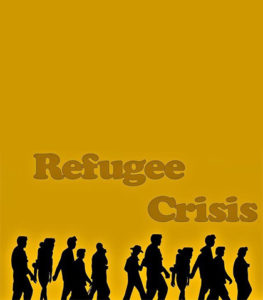Refugee and migrant compacts – what do they mean
Last year saw the adoption by most nations on the planet of two new compacts which were designed as roadmaps for managing mass migration.
With 68 million people displaced in the world and more than 25.4 million officially recognised refugees, over half of them under the age of 18 and living away from their home countries, the issue shows no signs of going away.
With so much at stake, it’s worth looking at the compacts and what they each mean.
They are the Global Compact for Migration (GCM) and the Global Compact on Refugees (GCR).
The two agreements came out of the influx of migrants in 2015, growing out of the New York Declaration that was adopted in September 2016 — one on refugees, and one on migrants.
They were both negotiated under the aegis of UN and had to be endorsed by members of the UN General Assembly.
Both are designed as frameworks for how to improve the lives of refugees and their host communities, both are non-binding, and both emphasize specific objectives.
What’s difference between the compacts?
To understand how they differ, it’s important to note the difference between a migrant and a refugee. Refugees, according to the UN’s 1951 Refugee Convention, are people who are outside of their home country because they fear persecution, conflict, or generalized violence, and so require international protection.
An international migrant is anyone who changes their country of residence, regardless of the reason for migration or their legal status. The UN distinguishes between a short-term, or temporary migration, and long-term or permanent migration.
GCM
The UN’s Global Compact on Migration covers all the dimensions of international migration “in a holistic and comprehensive manner,” according to the UN.
The agreement outlines best practices for managing migration around the world, and paints migrants as an opportunity for host communities, rather than a threat.
Although not an international treaty, the compact does have the potential to have legal implications in some cases if governments and judiciaries choose to adhere to the compact. And this is the reason some countries, including Australia, have not adopted the compact.
According to the UN, the GCM is “designed to enhance safety and order in migration management, and reduce recourse to dangerous, chaotic migratory routes”.
It is aimed at “maximizing all the benefits of human mobility and “mitigating its challenges”.
The Global Compact for Migration covers 258 million migrants worldwide and is rooted in international rights instruments.
It includes all types of migrants, including refugees and economic migrants, and is targeted towards economic migrants and those seeking jobs abroad.
In concrete terms, the GCM contains 23 objectives, which are wide-ranging and encapsulate everything from labour rights, migration detention, human trafficking, access to social services, xenophobia, recognition of skills and qualifications, remittances, repatriation, and climate change as a driver of displacement.
GCR
The Global Compact on Refugees encapsulates a set of measures to help host nations deal with migration management while respecting the rights of refugees.
It was signed by 170 countries and is also non-binding. The GCR builds on the 1951 Refugee Convention, which focuses on the rights of refugees alongside the obligations of states.
The refugee compact deals with the “how” of migration management, rather than outlining what the responsibilities of each group are, as the Refugee Convention does.
The UN says that the compact will, for the first time, have a practical workable model and a set of tools that help translate the underlying principles into action.
The compact is a move towards a stronger, fairer response to large refugee movements and it aims to provide more support for those fleeing, and for the countries that take them in, which are often amongst the poorest in the world.
Its objectives include: easing pressures on countries that host large numbers of refugees – primarily low- and middle-income countries; building self-reliance among refugees to help them thrive in exile; expanding access to third-country pathways of admission and other resettlement programs; and, supporting conditions that enable refugees to return to their countries of origin.
All this adds up to a more coherent, predictable and equitable international response to large refugee situations will be established, the UN says.
Laurie Nowell
AMES Australia Senior Journalist












